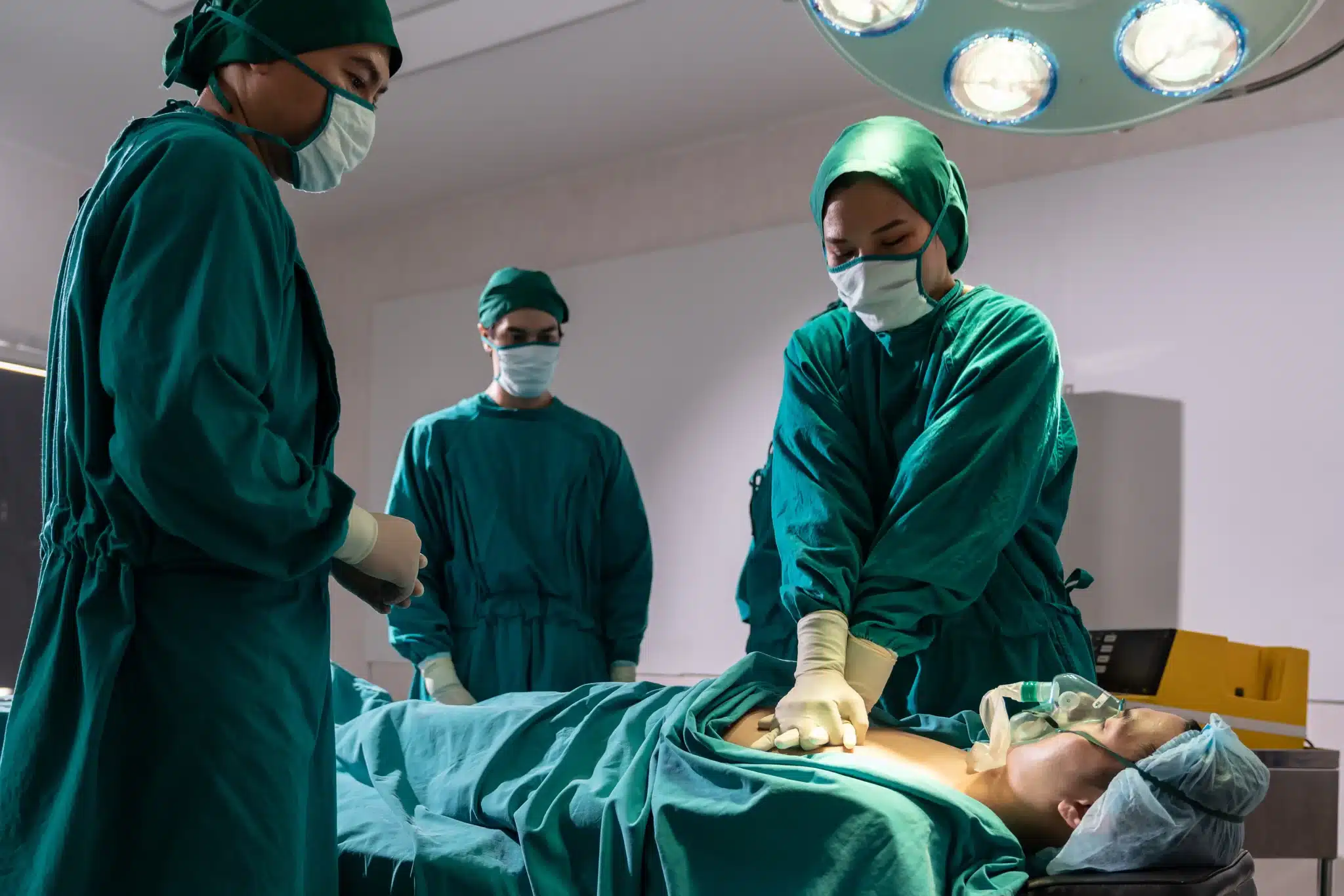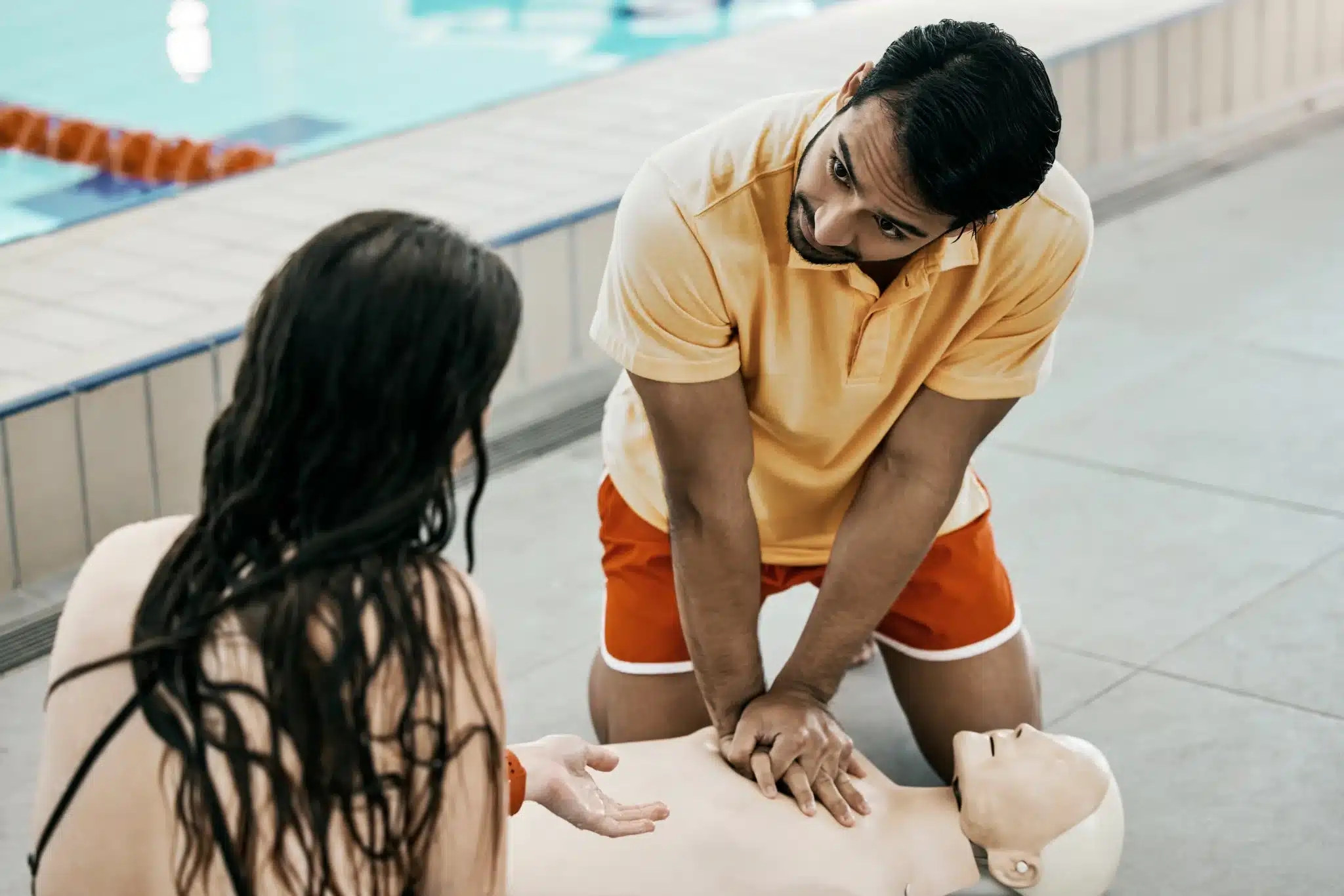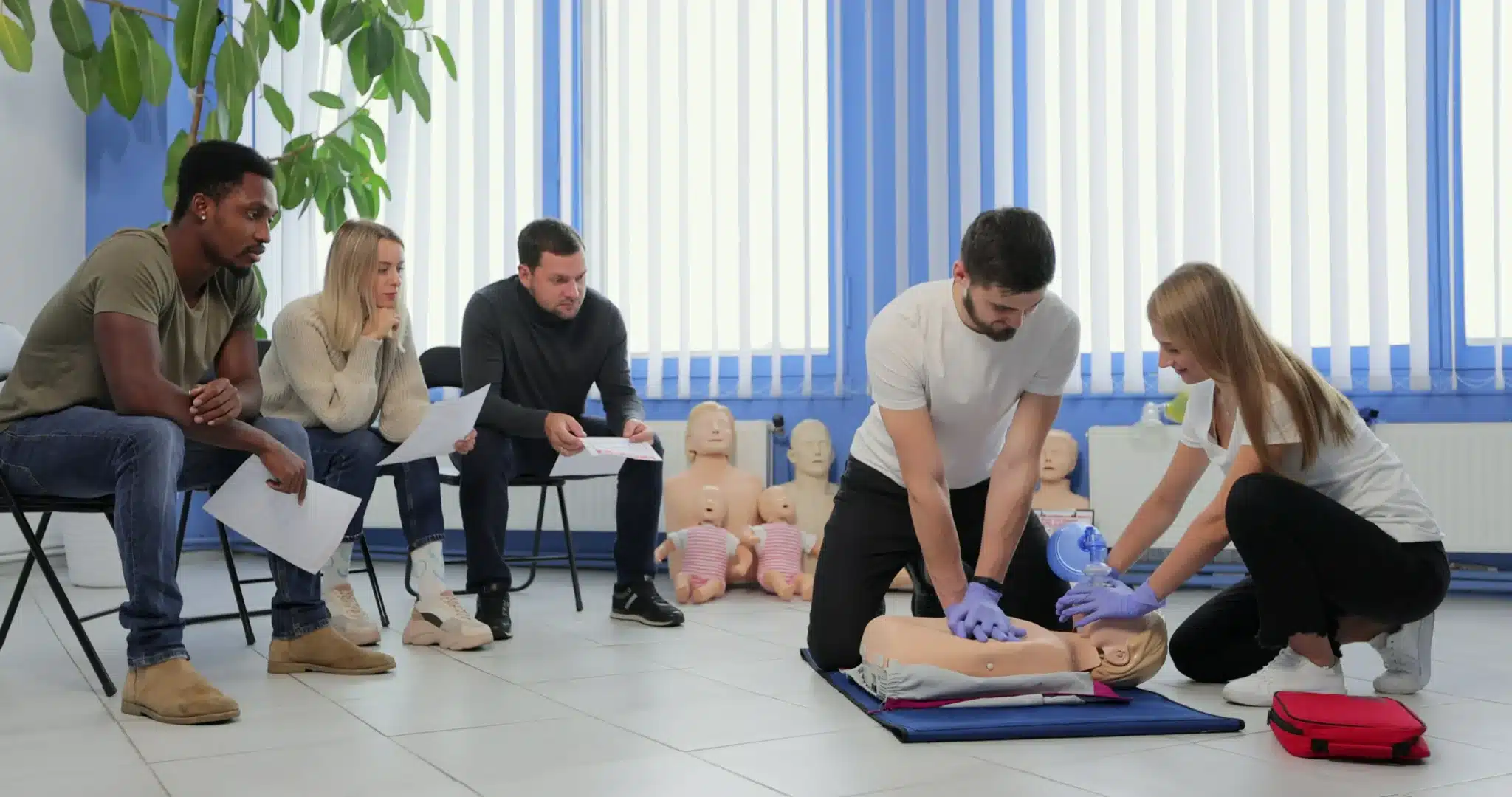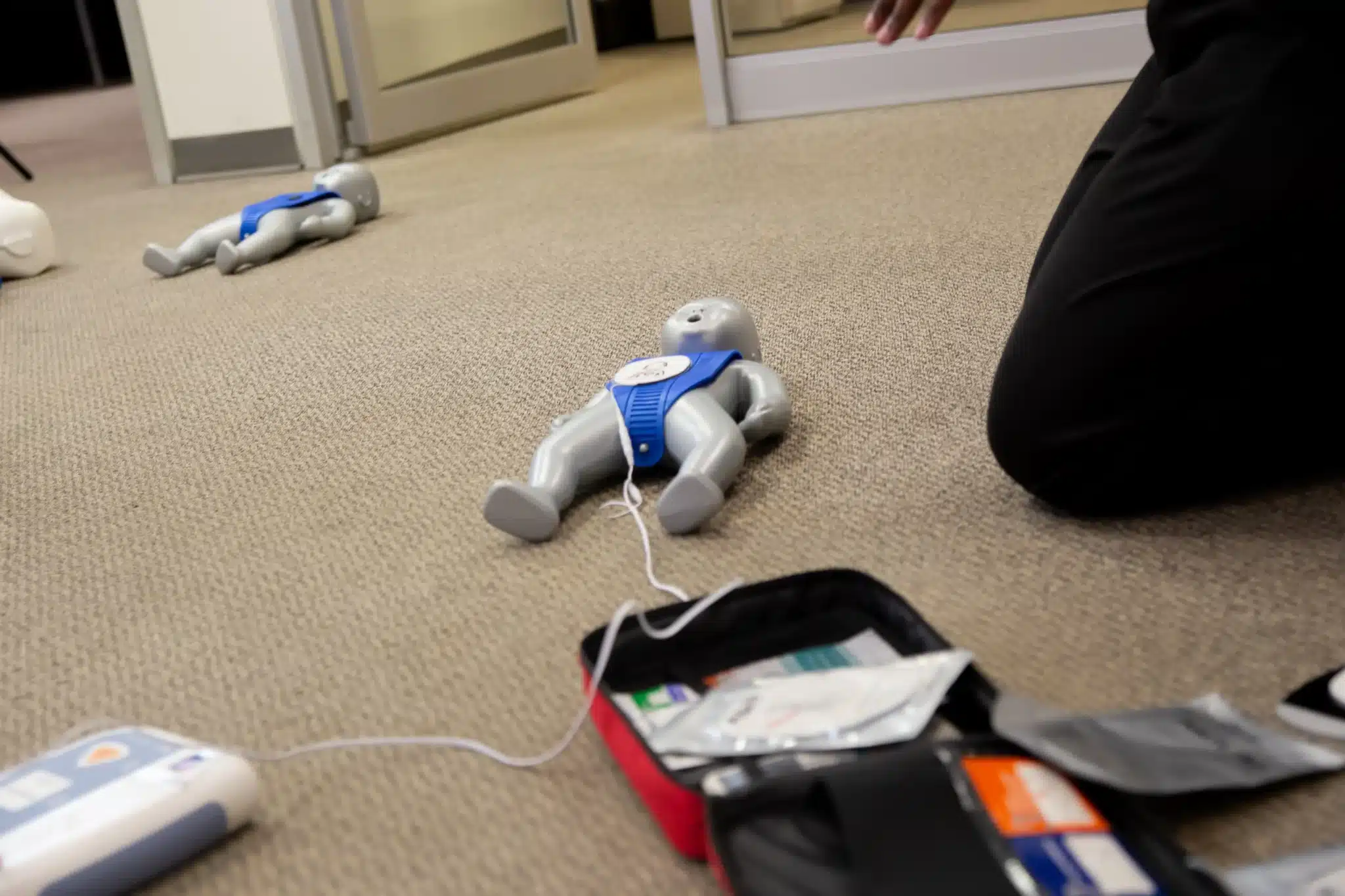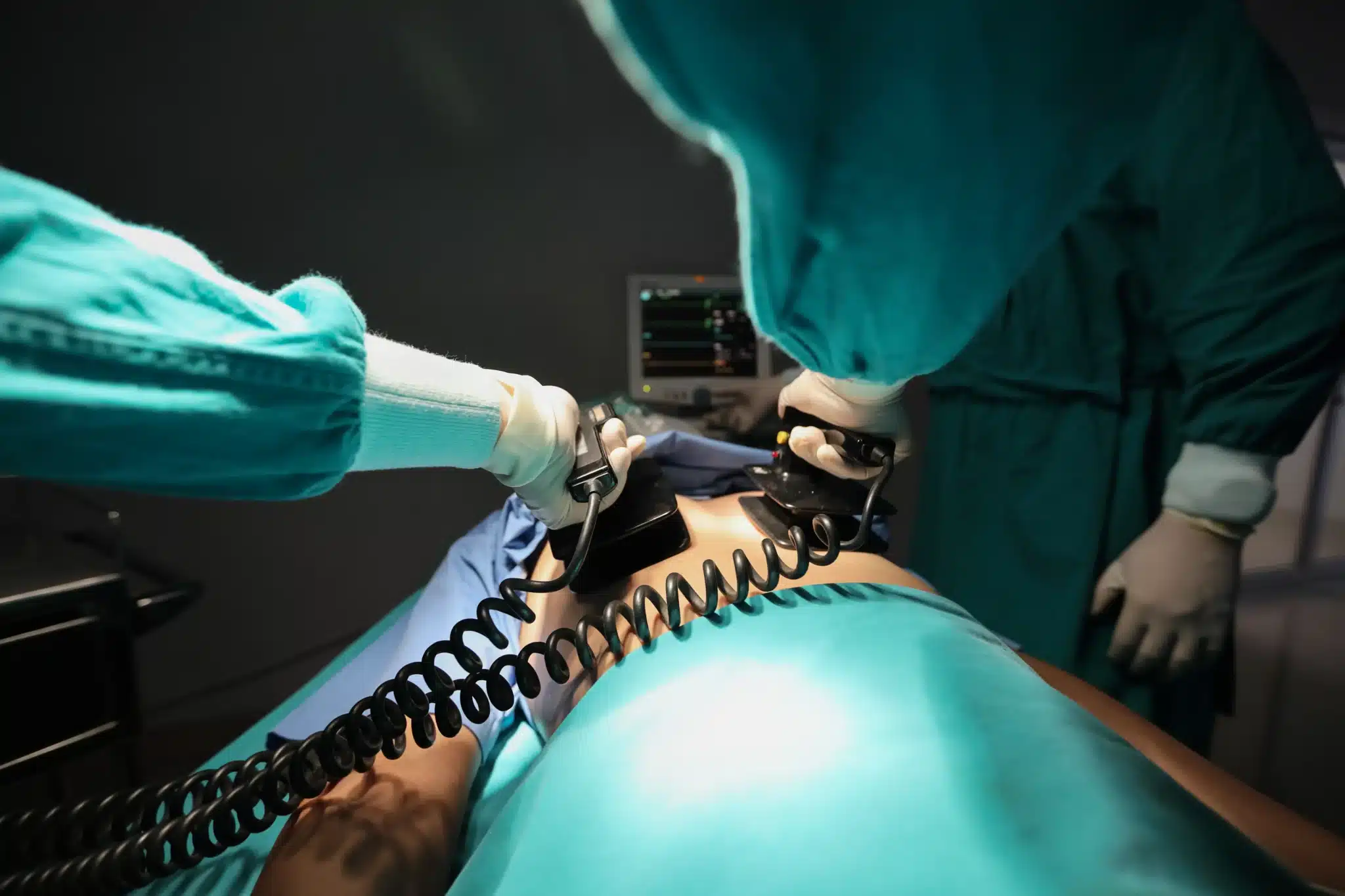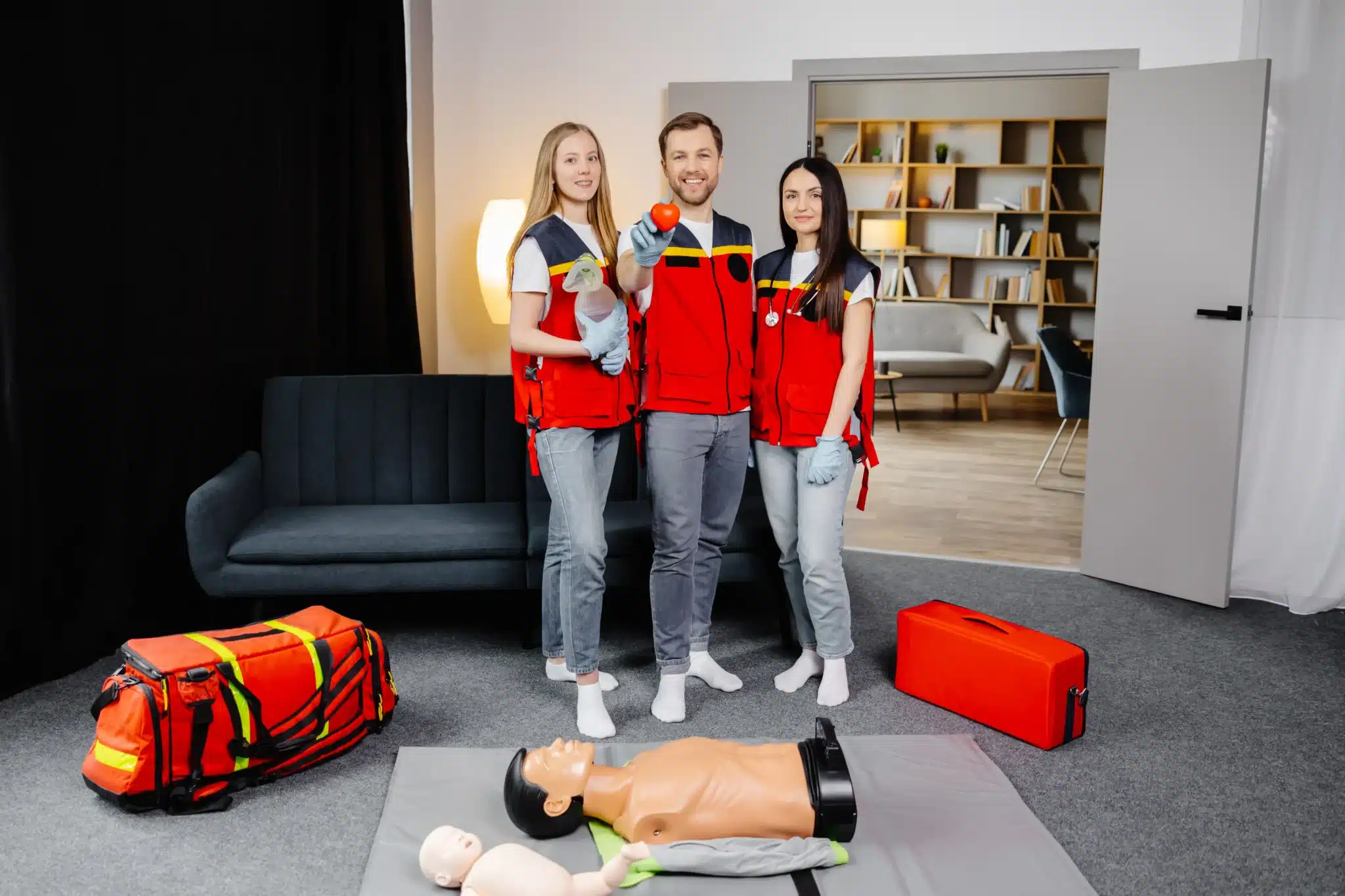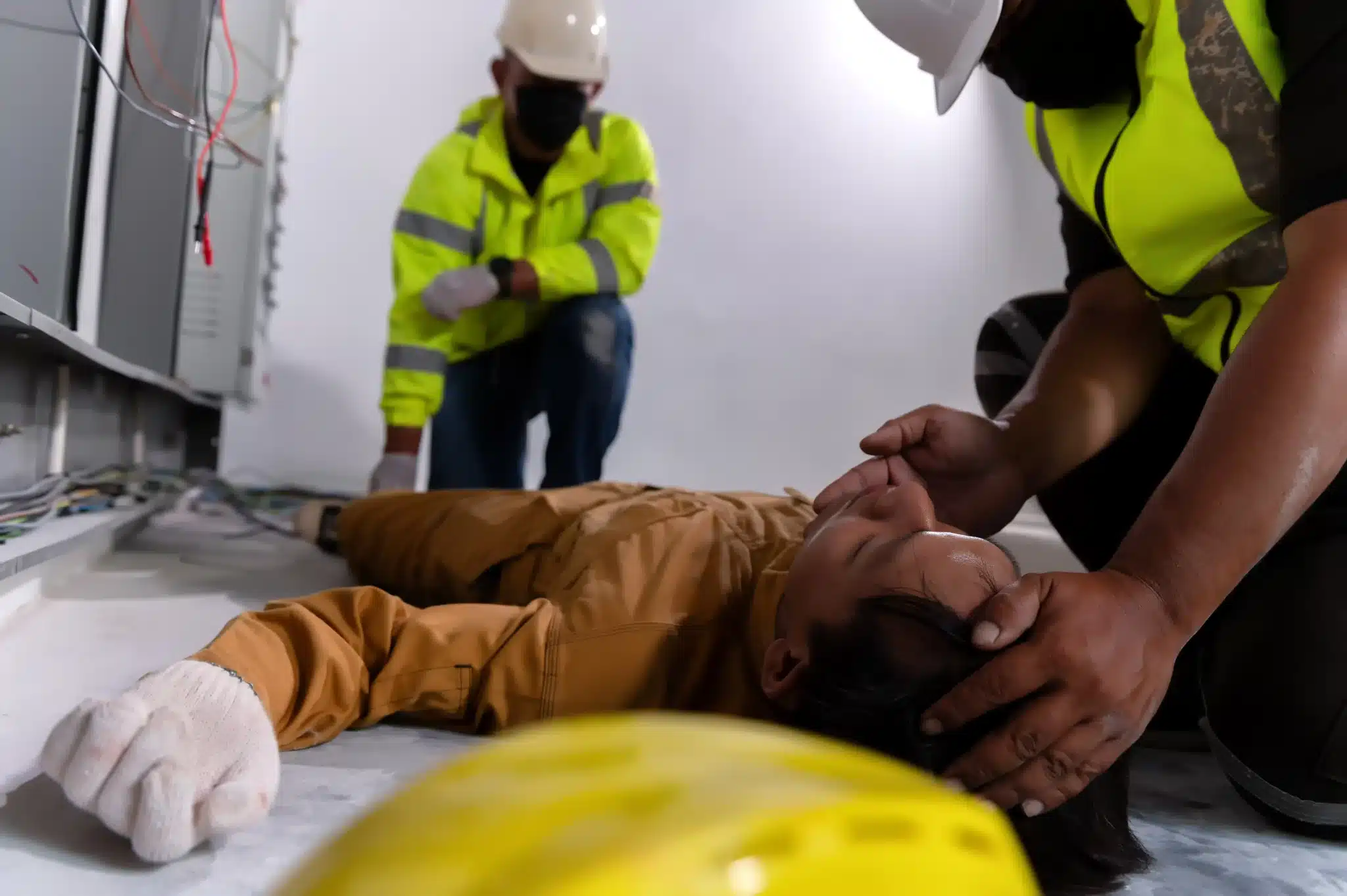In a medical emergency, every second counts. Basic Life Support (BLS) training empowers you to provide immediate, life-saving care before professional help arrives. This guide is your go-to resource for finding BLS classes near me and understanding everything involved in becoming certified. We’ll explore the core components of BLS training, including CPR, AED usage, and airway management. We’ll also discuss the various certification providers, the cost and time commitment involved, and how BLS certification can enhance your career prospects. Whether you’re a healthcare professional or a concerned citizen, this article will equip you with the knowledge to find the right BLS training and become a more confident responder in emergencies.
Key Takeaways
- BLS certification empowers you in emergencies: These skills are valuable for everyone, from healthcare providers to everyday people who want to be prepared. Find a course format—in-person, blended, or online—that works for you.
- Select a recognized training provider: Organizations like the American Heart Association and the American Red Cross offer high-quality, widely accepted BLS certification. Consider cost, location, and schedule when choosing a class.
- Stay current with your skills: Renew your BLS certification every two years to maintain your proficiency and confidence in responding to emergencies. Regular refreshers ensure you’re always ready to provide effective care.
What are BLS Classes & Why are they Important?
BLS classes equip you with the skills to respond to life-threatening emergencies. They focus on providing immediate care to someone experiencing cardiac arrest, respiratory distress, or an obstructed airway. These skills are critical in those first few minutes before professional help arrives. Whether you’re a healthcare professional or someone wanting to be prepared for anything, understanding BLS and its importance can make a real difference.
What is BLS & What Will I Learn?
Basic Life Support (BLS) certification goes beyond standard CPR. While CPR focuses on chest compressions and rescue breaths, BLS adds techniques like using a bag-valve mask for ventilation and how to recognize and respond to specific life-threatening situations. BLS certification courses teach you how to assess a patient, perform high-quality CPR, relieve choking, and use an automated external defibrillator (AED). It’s a comprehensive approach to emergency care. At Fremont CPR Classes, our BLS certification covers all of these essential skills. We also offer discounts for group classes.
Who Needs BLS Certification?
BLS certification is essential for healthcare providers like doctors, nurses, paramedics, and other professionals in the medical field. It’s often a job requirement and ensures they can provide a high standard of care in emergencies. However, anyone can benefit from BLS training. From teachers and childcare providers to lifeguards and other community members, having these skills can empower you to help in a crisis.
Common BLS Misconceptions
One common misconception is that BLS certification is difficult to obtain. While the skills are crucial and require proper training, the courses are designed to be accessible and manageable. Another misconception is that all BLS classes are created equal. Look for a certified training center, like Fremont CPR Classes, offering American Heart Association-certified courses. This ensures you’re receiving high-quality instruction and a recognized certification. Finally, be wary of programs claiming to be entirely online. True BLS certification always involves an in-person skills assessment component. For any questions about our courses, or to find a class near you in Fremont, Newark, or San Jose, please contact us.
How Do I Find a BLS Class Near Me?
Finding a Basic Life Support (BLS) class that suits your schedule and learning style is easier than you think. Whether you’re a healthcare provider, a student, or someone who wants to be prepared for emergencies, several reputable organizations offer BLS certification. Let’s explore some of the top providers and what to consider when choosing a class.
Top BLS Certification Providers
American Heart Association
The American Heart Association (AHA) is a leading authority on BLS training and certification. Their courses are widely accepted and often preferred by healthcare employers. You can easily locate AHA-certified training centers and instructors through their website. Many hospitals and healthcare systems also offer AHA BLS classes for their employees.
American Red Cross
The American Red Cross is another well-respected organization that provides BLS certification. They offer a range of courses, including options for healthcare professionals and the general public. You can find both in-person and blended learning options (online coursework combined with in-person skills sessions) through their website.
Fremont CPR Classes
For those in the Fremont, Newark, and San Jose area, Fremont CPR Classes offers convenient and high-quality AHA-certified BLS training. They provide various scheduling options, including weekend and evening classes, to accommodate busy professionals and students. Visit their website for course schedules and registration information.
National CPR Foundation
The National CPR Foundation offers BLS certification courses with a focus on practical skills and real-world scenarios. They provide training materials and resources to help you master the techniques needed to respond effectively in emergencies.
ProTrainings
ProTrainings offers a variety of online BLS certification and recertification courses. Their online platform allows you to learn at your own pace and complete the coursework from the comfort of your home. However, keep in mind that for AHA BLS certification, you’ll still need an in-person skills check.
Online vs. In-Person BLS Training
While some providers offer online components or blended learning options, it’s important to remember that the AHA BLS Provider course requires an in-person skills assessment. This hands-on component ensures you can effectively perform CPR and other life-saving techniques. Fully online AHA BLS Provider courses are not available. However, online or blended learning can be a convenient way to complete the cognitive portion of the course before demonstrating your skills in person. The American Heart Association provides more information on their BLS course requirements.
Choosing the Right BLS Class
When selecting a BLS class, consider factors like location, schedule, cost, and the specific requirements of your workplace or profession. If you need AHA certification, make sure the course you choose is officially certified by the AHA. Read reviews and compare different providers to find the best fit for your needs. Don’t hesitate to contact the training center directly if you have any questions about their courses or certification process.
BLS Certification: Cost & Time Commitment
How Much Do BLS Courses Cost?
The cost of Basic Life Support (BLS) certification courses varies depending on the training provider and the format you choose (online, blended learning, or in-person). While the American Red Cross offers blended learning, their prices typically range from $80 to $100. Other providers, like the American Heart Association, may have different pricing structures. It’s always a good idea to compare prices and check for available discounts, especially for group sign-ups. Fremont CPR Classes often has discounts for group bookings, making it a more affordable option for workplaces or families training together.
Course Length & Certification Validity
BLS courses are designed to be efficient and comprehensive. In-person, instructor-led courses typically last about four to five hours. Blended learning courses, combining online modules with in-person skills sessions, usually require three to four hours total, split between online study and hands-on practice. You’ll receive your BLS certification upon successful completion, regardless of the format. This certification is valid for two years, after which you’ll need to renew it to stay current.
Renewing Your Certification
Staying up-to-date with your BLS skills is crucial for providing effective care in emergencies. Renewal courses refresh your knowledge and skills and are available as your certification nears its expiration date. Like initial certification courses, renewals are offered in various formats, including online and in-person options. The American Red Cross offers renewal courses, letting you choose the format that best fits your schedule. Renewing your certification ensures you’re prepared to respond confidently and effectively in critical situations.
What Happens in a BLS Class?
So, you’ve decided to take a BLS class—great choice! Knowing what to expect can help you feel prepared and confident. Here’s a glimpse into a typical BLS class:
Course Content & Curriculum
BLS classes cover the core skills needed to respond to life-threatening emergencies. You’ll learn adult, child, and infant CPR, how to use an AED, and techniques for relieving choking. The curriculum also emphasizes critical thinking and problem-solving, essential for navigating stressful situations. Whether you’re a healthcare provider or completely new to BLS, the course adapts to different learning levels. Expect a combination of lectures, demonstrations, and interactive discussions. You’ll also learn about team dynamics and effective communication during emergencies.
Hands-on Practice & Skills Assessment
BLS isn’t just about theory—it’s about action. A significant portion of the class involves hands-on practice. You’ll work with mannequins to perform CPR and practice using an AED in simulated scenarios. This hands-on training helps build muscle memory and confidence, ensuring you’re ready to respond effectively in a real emergency. Most BLS courses run between 2.5 and 4.5 hours. You can choose in-person classes for immediate feedback or blended learning options that combine online coursework with an in-person skills assessment.
BLS Certification Exam
After completing the course, you’ll take a certification exam to demonstrate your proficiency. The exam typically includes both a written component and a practical skills test, covering everything you learned during the course. Once you pass, you’ll receive your BLS certification, valid for two years. To maintain your skills and stay current with the latest guidelines, you’ll need to renew your certification every two years through a refresher course. This ensures you’re always prepared to provide the best possible care.
Make the Most of Your BLS Certification
So, you’re ready to get your BLS certification. Smart move! This certification can open doors to a variety of career opportunities and enhance your professional skillset. Let’s explore how you can maximize the benefits of becoming BLS certified.
Career Opportunities & Professional Benefits
BLS certification demonstrates a commitment to high-quality patient care and can significantly strengthen your resume. It’s a valuable asset for many healthcare professionals, including physicians, nurses, paramedics, and emergency medical technicians. Beyond healthcare, BLS certification is often preferred or required for professions like firefighters, police officers, lifeguards, and other roles involving public safety. Holding a current BLS certification shows employers you’re prepared to handle emergency situations and provide crucial life-saving support. This can give you a competitive edge in the job market and potentially lead to career advancement. For a full list of professions that may require or benefit from BLS Certification, see our Northern CA CPR Directory.
Preparing for Your BLS Training
Before you begin your BLS training, take some time to prepare. Familiarize yourself with the American Red Cross or American Heart Association guidelines for BLS. Understanding the core concepts and procedures beforehand will help you get the most out of your training. You can find study materials and resources online or through your chosen training provider. Consider which learning format works best for you: in-person classes offer hands-on practice and direct interaction with instructors, while online courses provide flexibility and self-paced learning. Fremont CPR Classes offers both options, allowing you to choose the format that suits your schedule and learning style. We also offer discounts for group classes, so check those out!
BLS & Other Life-Saving Certifications
BLS certification is a cornerstone for other advanced life support certifications. While CPR teaches basic life support techniques, BLS provides a more comprehensive approach. It covers a broader range of skills, including CPR, using an automated external defibrillator (AED), and relieving airway obstructions in adults, children, and infants. This makes BLS a prerequisite for certifications like Advanced Cardiovascular Life Support (ACLS) and Pediatric Advanced Life Support (PALS). If you’re considering a career in healthcare or a related field, obtaining your BLS certification is an excellent first step. It not only equips you with essential life-saving skills but also lays the foundation for further professional development in emergency medical care. You can explore various life-saving certifications, including ACLS, through providers like Fremont CPR Classes.
Related Articles
- BLS Certification in San Jose: The Complete Guide – Fremont CPR Classes
- Your Guide to ACLS Certification in San Jose – Fremont CPR Classes
- BLS Courses in San Jose: Your Complete Guide – Fremont CPR Classes
- BLS for Healthcare Providers in Newark: A Complete Guide – Fremont CPR Classes
- BLS HeartCode San Jose: Your Certification Guide – Fremont CPR Classes
Frequently Asked Questions
What’s the difference between CPR and BLS? CPR focuses on chest compressions and rescue breaths, while BLS encompasses CPR and other skills like using a bag-valve mask and AED, and recognizing life-threatening conditions. It provides a more comprehensive approach to emergency care.
How long does BLS certification last, and how do I renew it? BLS certification is typically valid for two years. Renewal involves taking a refresher course, often available online or in-person, to ensure your skills and knowledge are up-to-date.
Is online BLS certification available? While some course components might be online, the American Heart Association requires an in-person skills assessment for BLS Provider certification. Fully online AHA BLS Provider courses don’t meet the requirements.
Where can I find BLS classes near me? Several organizations offer BLS certification, including the American Heart Association, American Red Cross, and National CPR Foundation. You can find classes through their websites or by searching online for local training centers like Fremont CPR Classes.
What if I have a group that needs BLS training? Many training centers, including Fremont CPR Classes, offer discounts for group bookings. Contact the provider directly to inquire about group rates and scheduling options.
